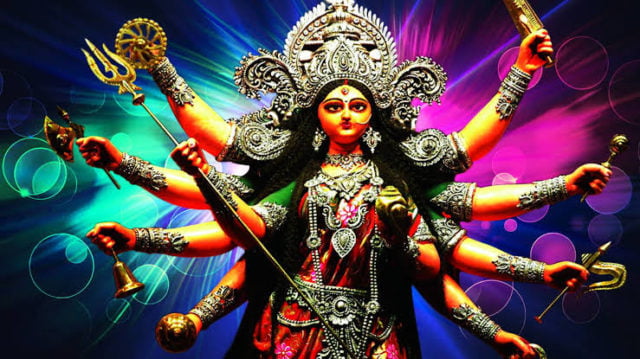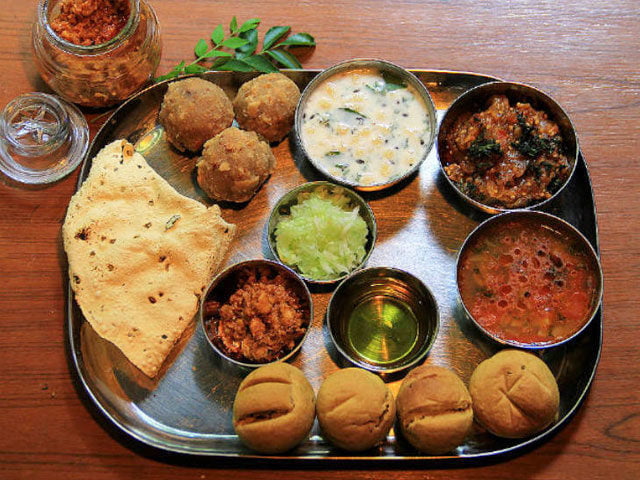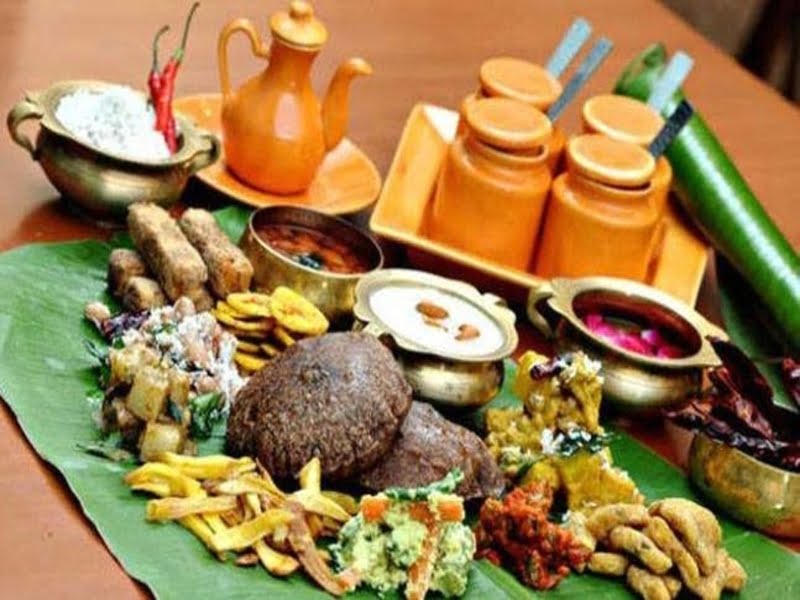The bright and joyful season of Navratri began yesterday. Colorful clothes, songs, dances, and puja are the traditional hallmarks of this festival, which is celebrated over a period of 9 days.
Each day is dedicated to worship a different avatar of Goddess Durga who fought a battle to win over the buffalo demon Mahishasur as per Hindu mythology.

While different states enjoy the festivities and fervor differently, the one thing that is common for most people is keeping a fast for 9 consecutive days.
For the uninitiated, fasting during this festival doesn’t mean not eating at all and landing in a hospital. It simply means following some guidelines and recommendations when it comes to food.
Typical Navratri food, also known as satvik food, comprises of the following:
- Buckwheat (kuttu) roti
- Milk and buttermilk
- Dishes made from sago (sabudana), water chestnut (singhara) flour, colocacia (arbi), yam (suran), sweet potato (shakarkandi) etc.
- Yogurt with pumpkin and bottle gourd
- A lot of fluids – juices, coconut water, vegetable soups etc.
- Fruit such as papaya, apple and pear.
People avoid non-vegetarian food, onion, garlic and alcohol during these 9 auspicious days.
Also Read: These Navratri Memes On Twitter Will Hit Every Non Veg Lover Hard
I always thought that people fast during Navratri only for religious and spiritual reasons. Also, since I am a big foodie who would normally choose a feast over a fast, I never paid heed to the scientific reasons behind why it is good to fast until recently.
Now that I’ve realized the importance of fasting in the right way, I’d like to share the same with you.

So, here are 5 reasons why you should fast this Navratri even if you don’t celebrate it.
1. Fasting Cleanses The Digestive System
During Navratri, we change our staple diet, which includes rice, pulses and wheat to buckwheat, sago and water chestnut. This simple and light food not only gives our body a break, but also cleans the gastro-intestinal tract along with the surrounding organs.
This diet also helps in burning the toxins in our body. When toxins are flushed out of our system, we feel energized and rejuvenated as the cells are regenerated.
2. Eating At Regular Intervals Ensures Steady Energy Levels
Since the food we eat is light, sometimes we may not feel full and hence, it is advised to eat healthy snacks such as dry fruits, makhanas, fruits, nuts, and salad between meals which maintains steady energy levels and regulates the blood sugar level.
These snacks are rich in fibre, but be careful to eat them in moderation only.
3. Intake of Fluids Keeps The Body Hydrated
We should drink a lot of fluids like watermelon juice, herbal tea, coconut water and juices while we fast. These fluids not only keep us well-hydrated, but also maintain the balance of electrolytes in the body.
Moreover, they allow the body to retain antioxidants which boosts our immunity and helps us fight pathogens effectively. Fluids also aid in flushing out toxins from the body.
4. Use Rock Salt Instead of Common Table Salt
The only form of salt used for 9 days is rock salt (sendha namak). It is the purest salt as it is raw and unprocessed. It facilitates the absorption of minerals and provides 84 out of 92 essential trace elements like zinc, potassium, magnesium, calcium etc.
It improves our blood pressure, maintains pH balance and fights harmful bacteria.
5. Fasting Helps Us Prepare For The Season Change
The festival of Navrati is generally celebrated in the months of September-October which are typically characterized by a change in the weather, followed by a change in the season.
The onset of winter can make our bodies vulnerable to many diseases. Hence, to adjust to the drop in temperature, a healthy and light satvik diet is recommended. This is where the Navratri diet fits in perfectly into the picture.
As much as I like to treat my taste buds, it is important to take good care of my health. So, this year I have decided to follow the above regime in order to make sure my mind and body work at their optimum.
Will you also follow the Navratri diet this year? Let us know in the comments below.
Sources: The Statesman, Times of India
Image Credits: Google Images
Find The Blogger: @thinks_out_loud
You May Also Like To Read:
Bengali Family To Worship A Muslim Girl As Kumari On Durgashtami


































